Riding the Alaska Railroad, Seward to Anchorage
The more we cruise, the more we like longer and longer cruises. Seven nights is simply too short – just when you start to really get into the spirit of things, it’s time to leave 🙁 But at least we have more exploring to do by land – starting with a ride in a dome car on the best section of the Alaska Railroad, called the Coastal Classic!
The first photo, of the dock at Seward, was shot on Friday (June 8th) at 05:20. I’m still a few days behind on the blog but will catch up shortly now.
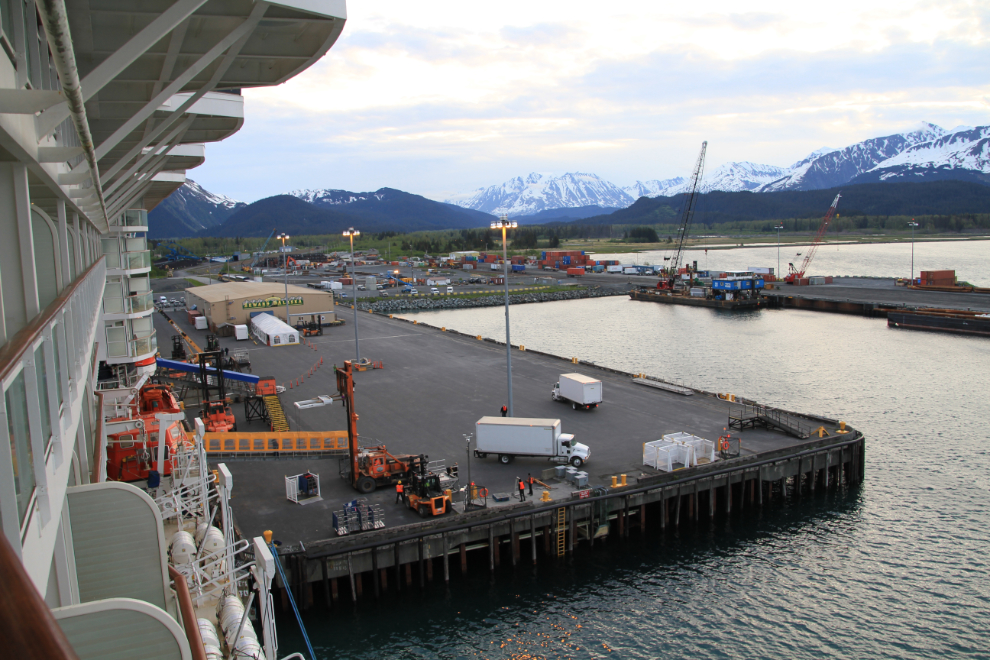
Before leaving the ship, a shot of another of the very nice public areas on the Celebrity Millennium, the two-storey library.
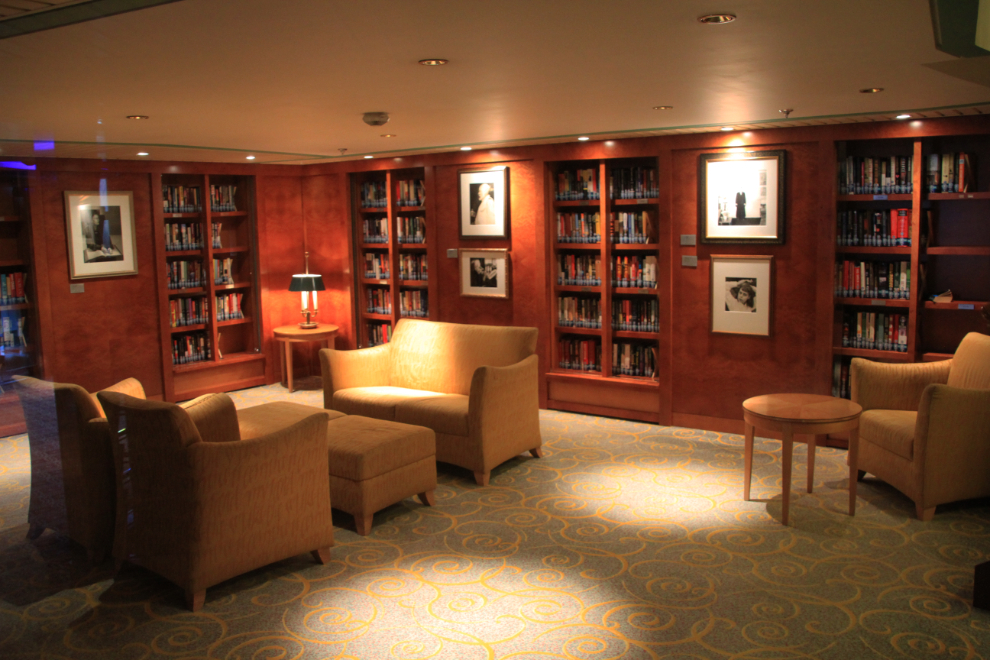
Disembarkation was quick and simple. We were among the first to get off – a short walk took us to the luggage and reception building, which was well organized. This was shot at 06:14.
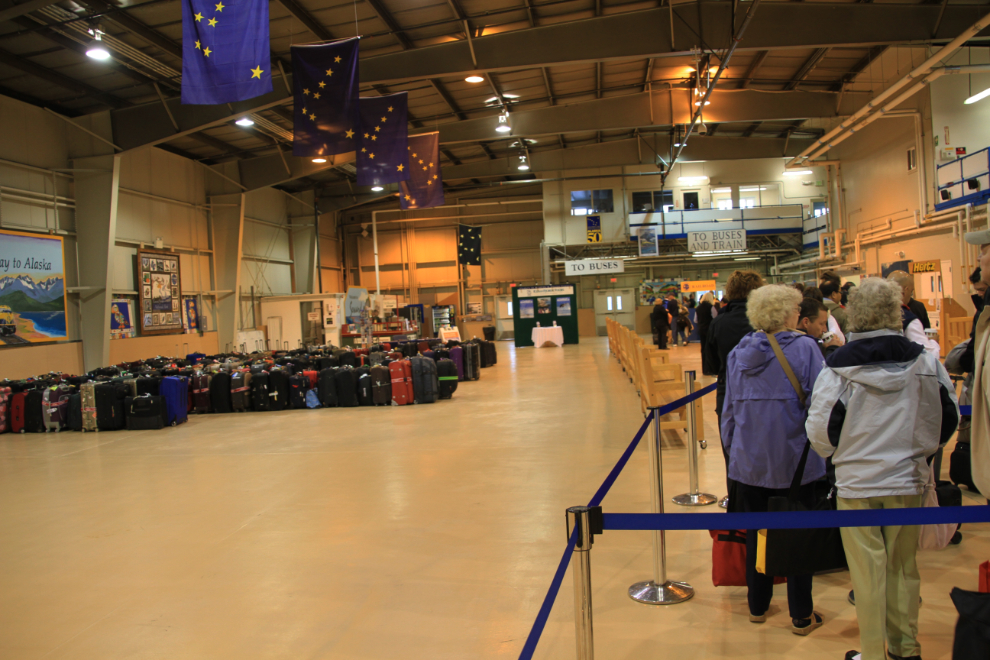
Within 5 minutes I had all of our railroad tickets and we walked to our car and took our assigned seats. Very nice indeed!

At 06:50 we waved goodbye to the Celebrity Millennium and started the next leg of our Alaska adventure. This is Seward’s little airport. I often see questions from people online, wondering why they can’t find flights home from Seward – this is why. You have to go to Anchorage and fly from there.
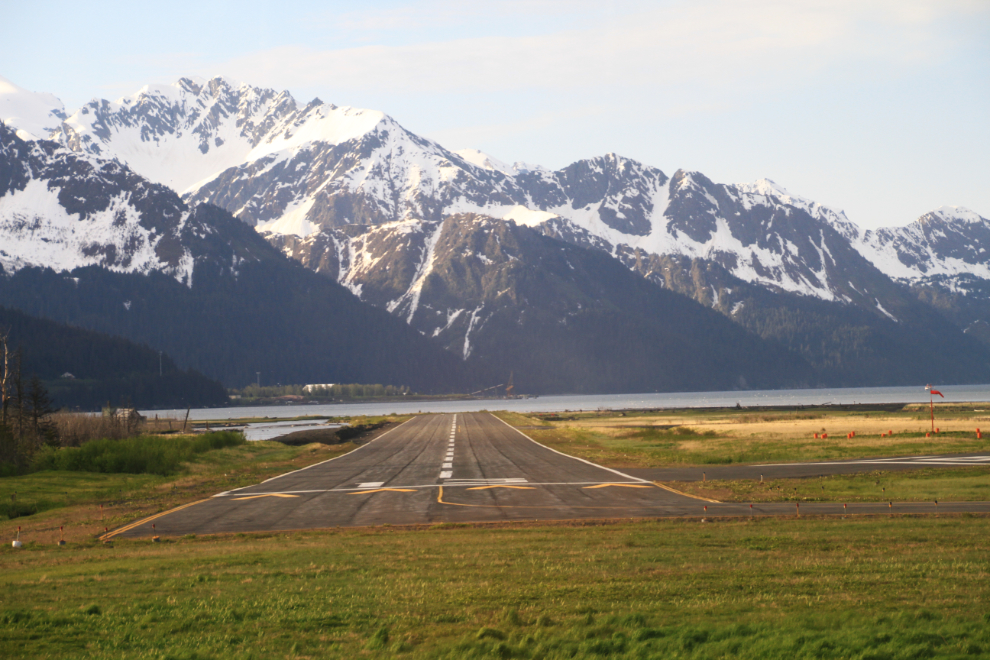
Having the huge curved windows is a must on this run! The seating in the cars is 4 to a table, so 2 people face the front of the train and 2 face backwards. As well as the regular dome cars, there is a very nice lounge car, and meals and drinks of all types are available.
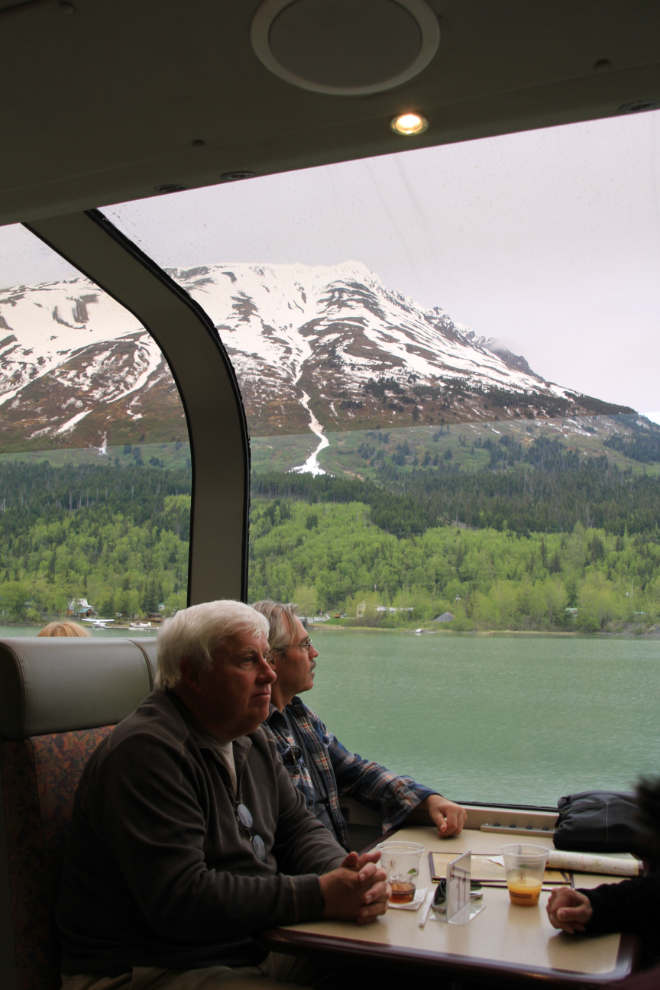
Our first large glacier of the day, at 08:45. This is the Trail Glacier, seen from Mile 44.3 (Seward is Mile 0, Fairbanks is Mile 470.3). The railroad roughly parallels the Seward Highway from Seward to Moose Pass at Mile 26, then they run in different valleys, the railroad taking a shorter and much more dramatic route to the east of the highway, up Trail Creek then down the Placer River. I was hoping that Google Earth would show the route well, but most of it is in a very-low-resolution mapping area.
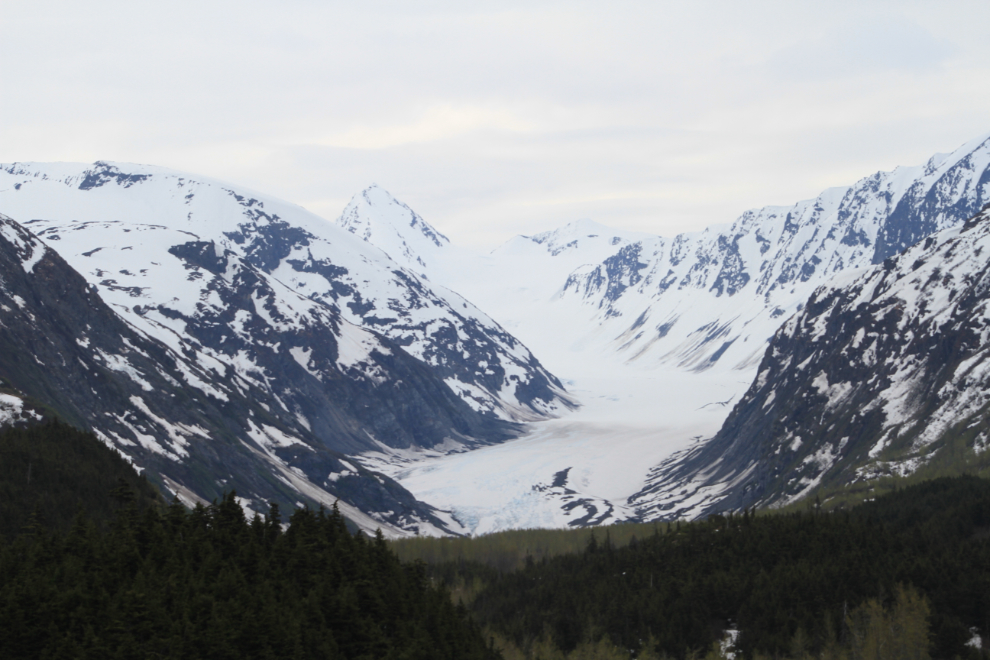
From about Mile 43, cameras are clicking rapidly – the views are simply spectacular. There are countless waterfalls of all sizes.
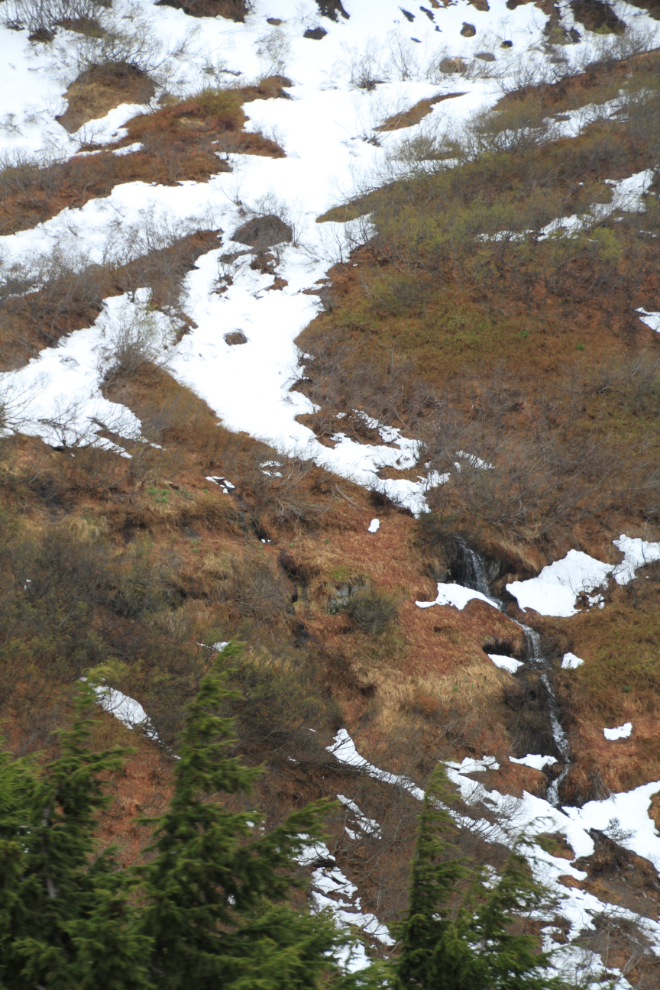
The best views alternate back and forth, and everyone gets a look at both sides anyway.
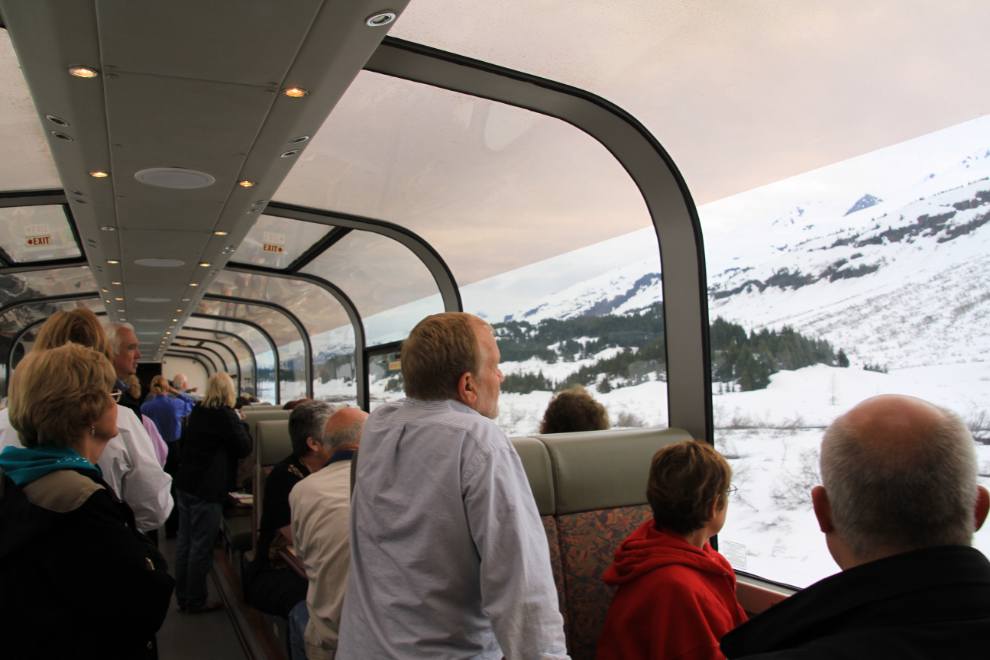
The Bartlett Glacier is visible ahead, at the upper end of the S curves at Mile 51. This section of track used to have a world-famous series of trestles that looped over each other to lessen the grade, but they were replaced by the much steeper S curves in the late 1940s when more powerful diesel locomotives replaced steam ones.

Dropping down the S curves. The grade is very impressive, about 3%.
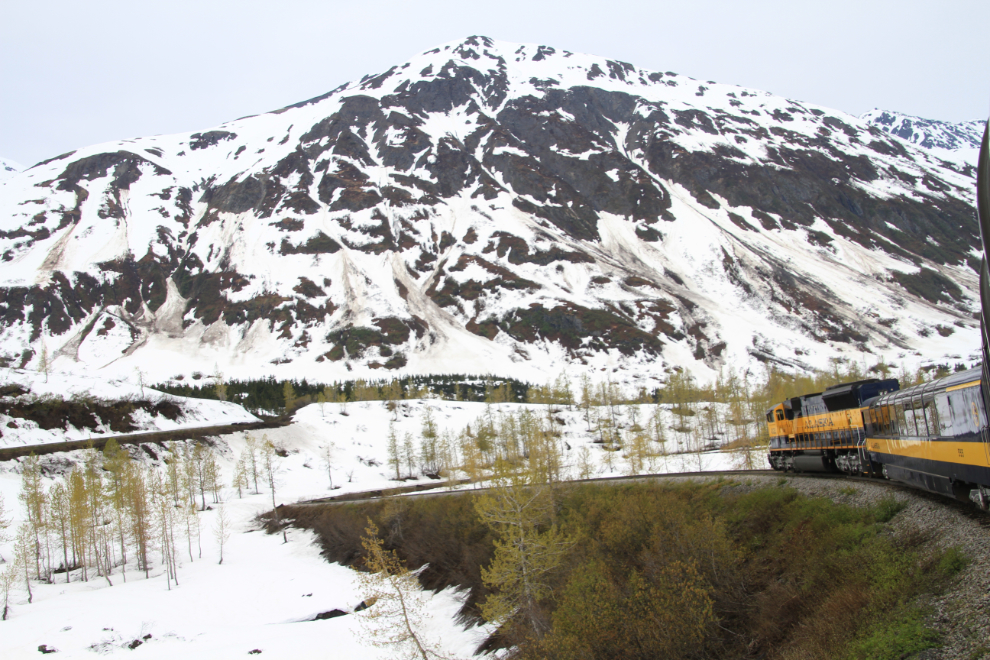
Crossing one of the many avalanche zones on this section of the line.
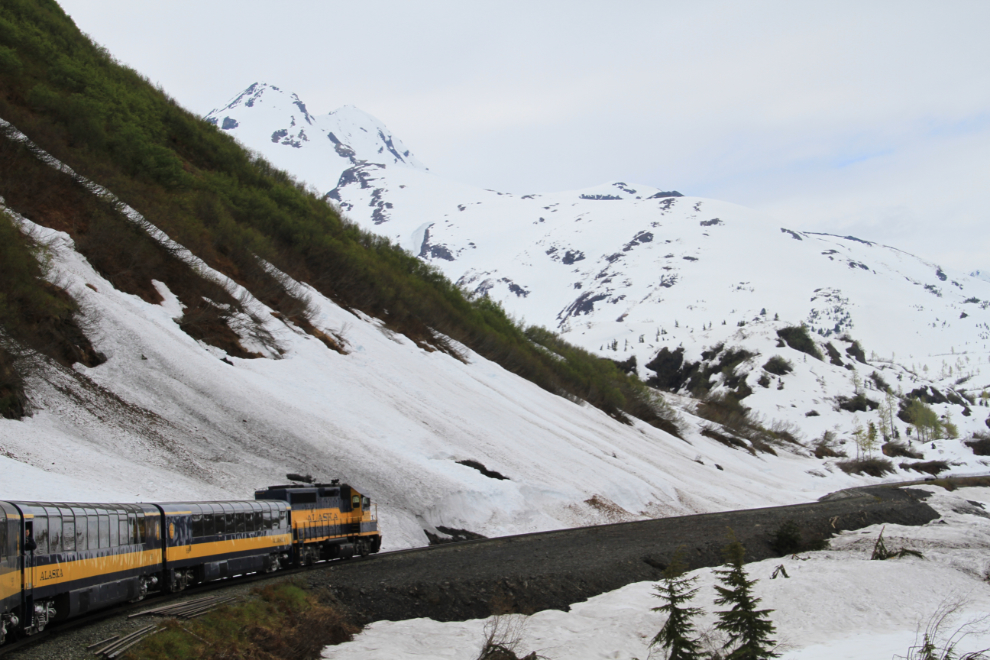
In the center of the photo, one of the stone supports for the old loop trestles can be seen. This was shot at 09:04.
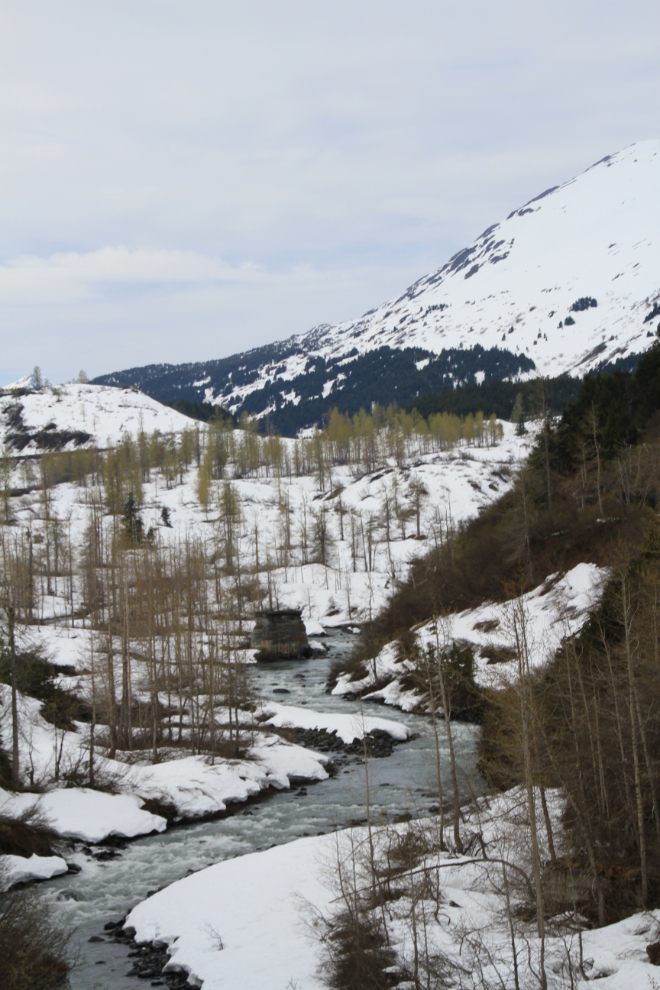
When passing through country like this, I always find myself thinking about how the original surveyors and railroad builders must have viewed it. They would no doubt be just as awed, though with very different perspectives on what it would mean to their lives.
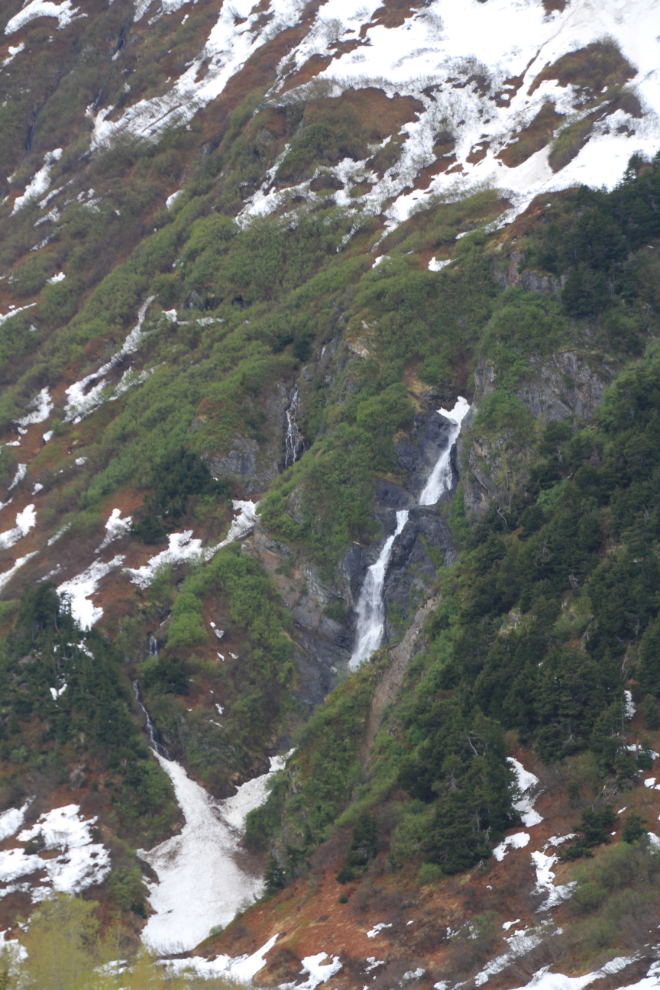
At 09:10 we side-tracked for about 10 minutes to let the southbound passenger train by. This would head north from Seward at 6:00pm.

Avalanches and waterfalls…
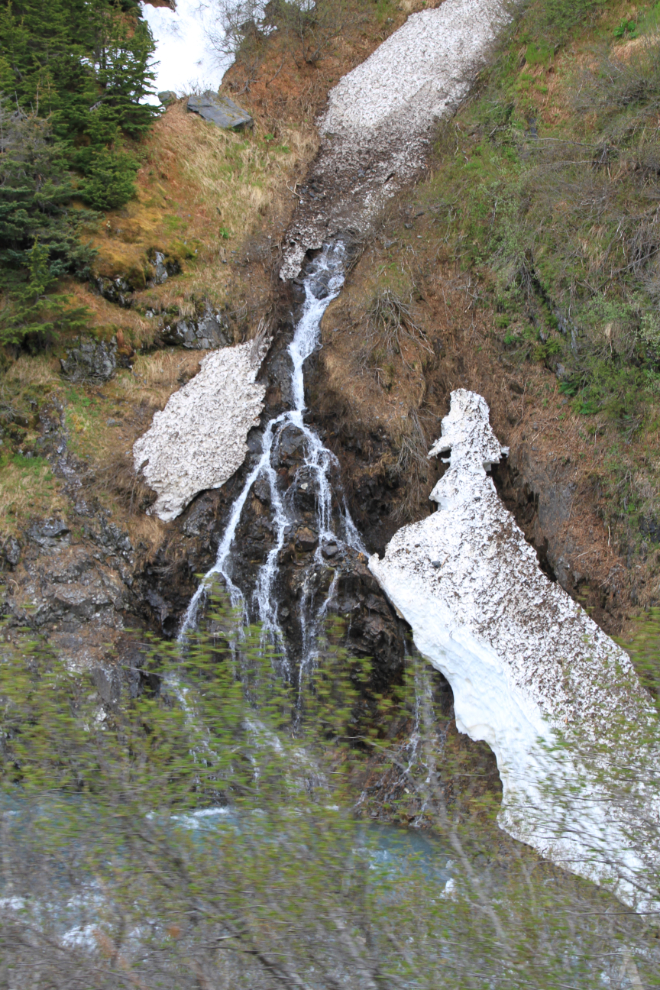
…canyons and tunnels…
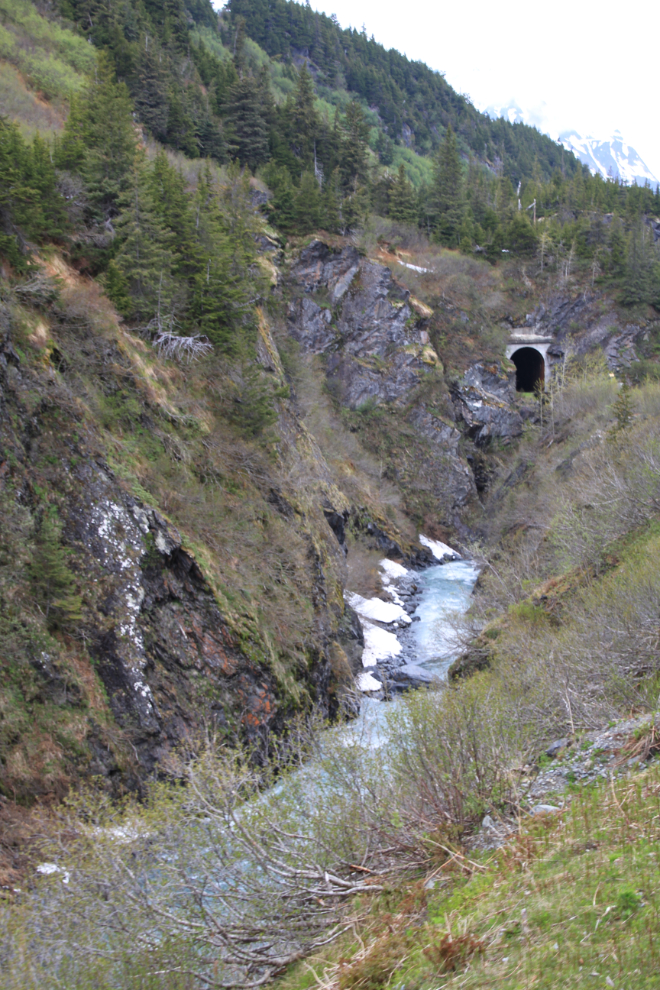
The view straight down.
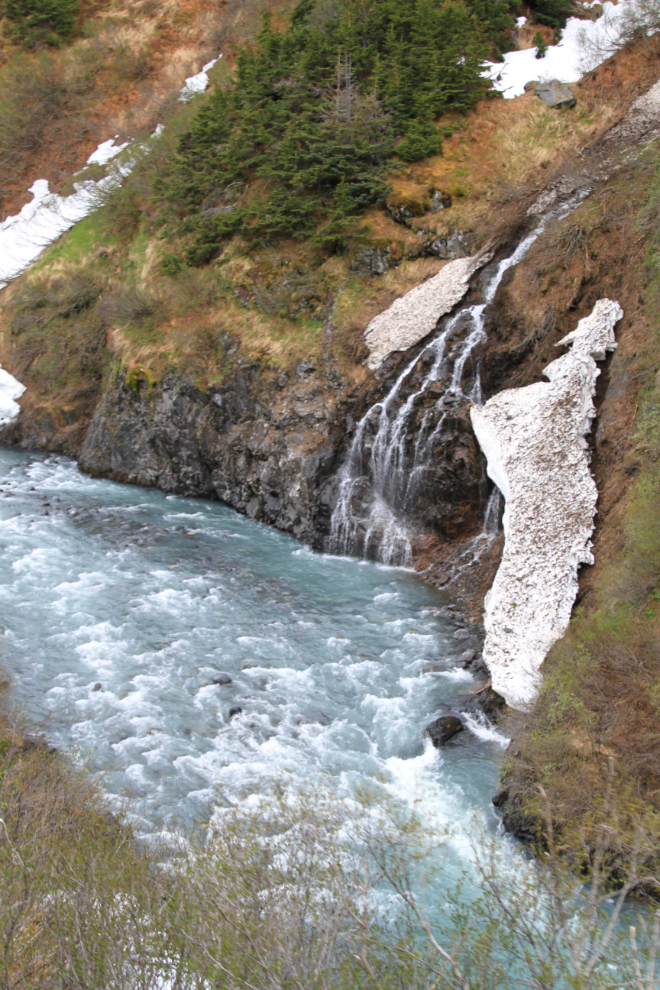
Waaay down!! Most of the photos though this section were shot from between the cars – there were half a dozen of us swapping positions to get these shots.
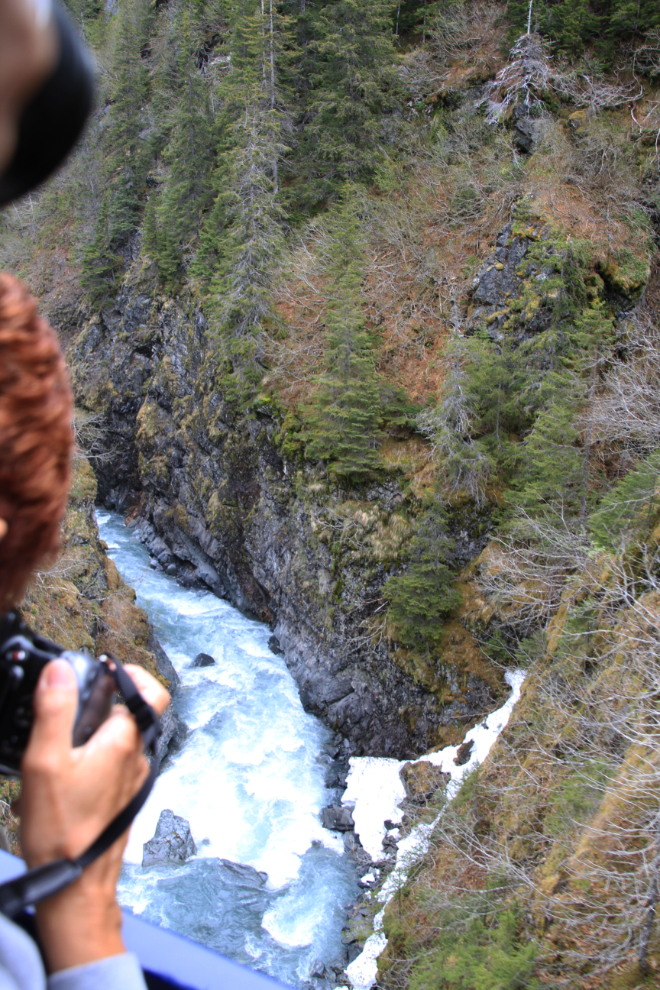
Another tunnel through the canyon.
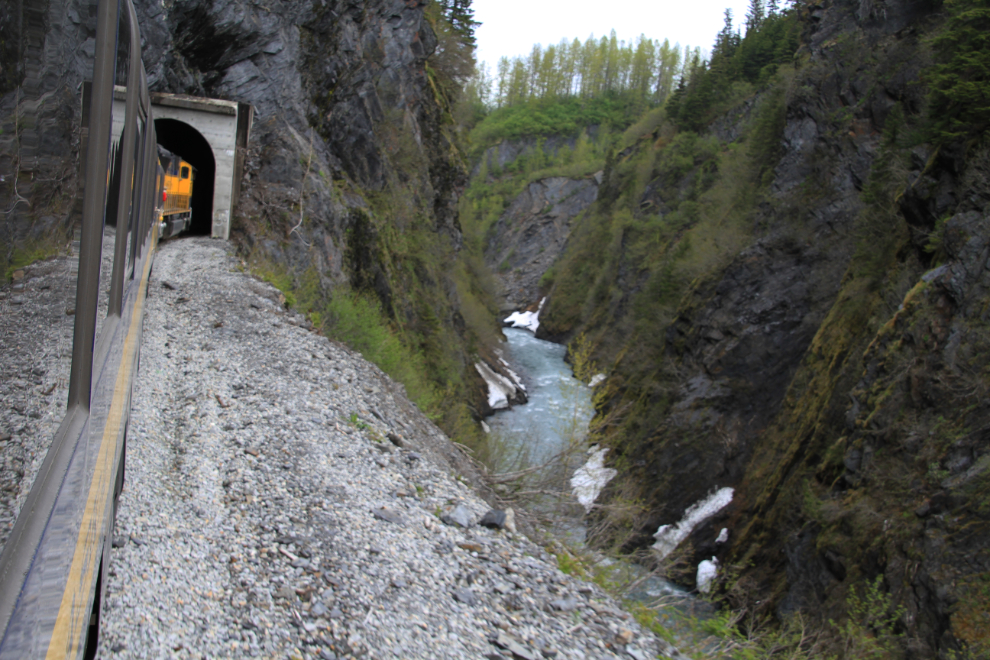
Coming out of the tunnel seen above. It’s now 09:29.
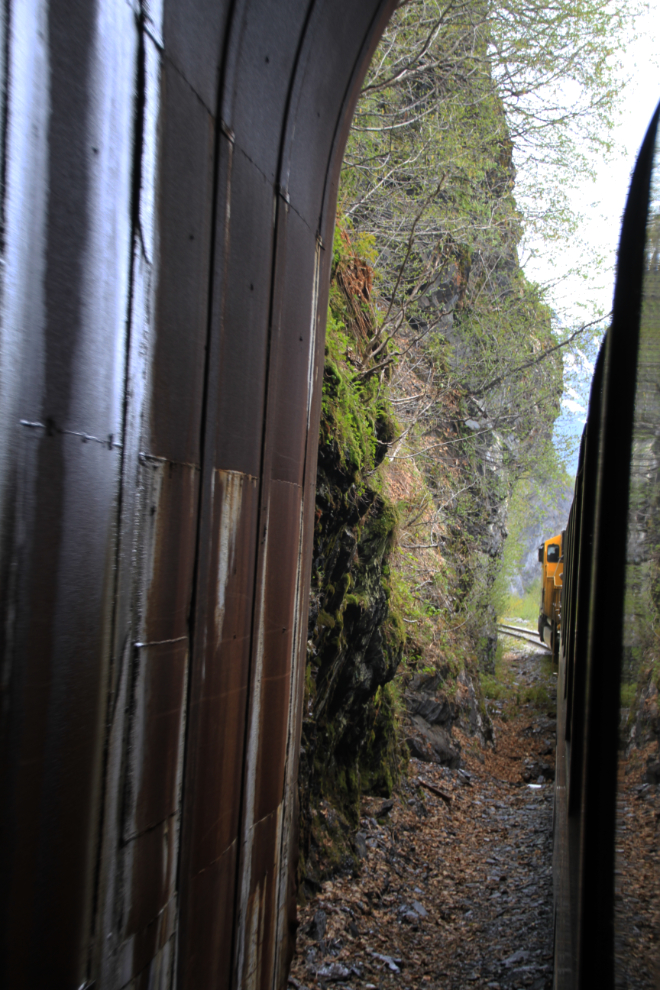
The impressive Spencer Glacier is less than a mile from the tracks at Mile 53.7.
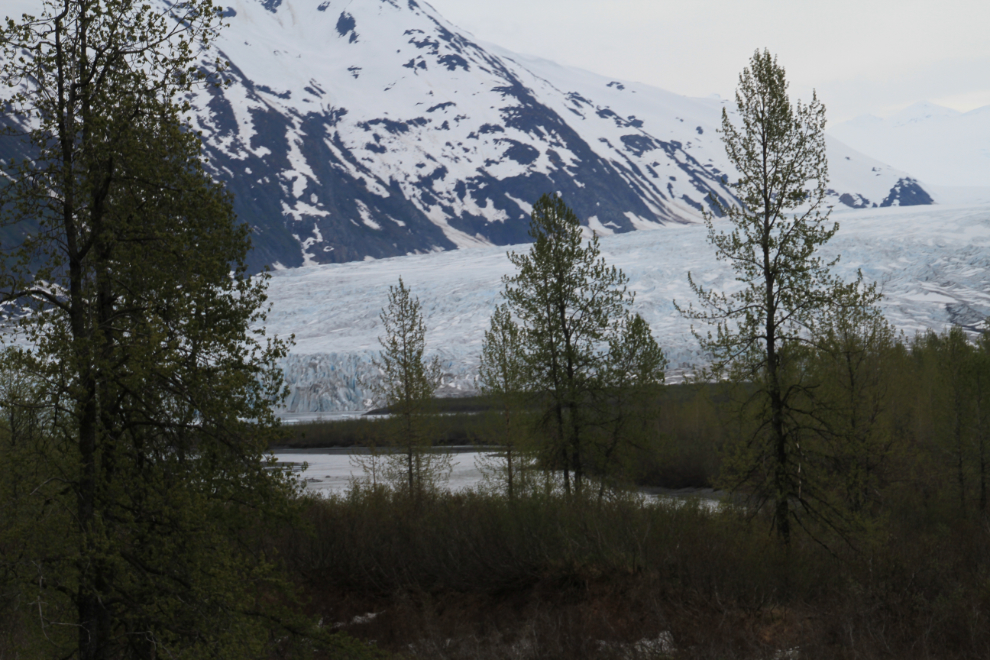
I don’t imagine that many trains slow down to give you a better look at a bald eagle nest, but the “Coastal Classic” does!
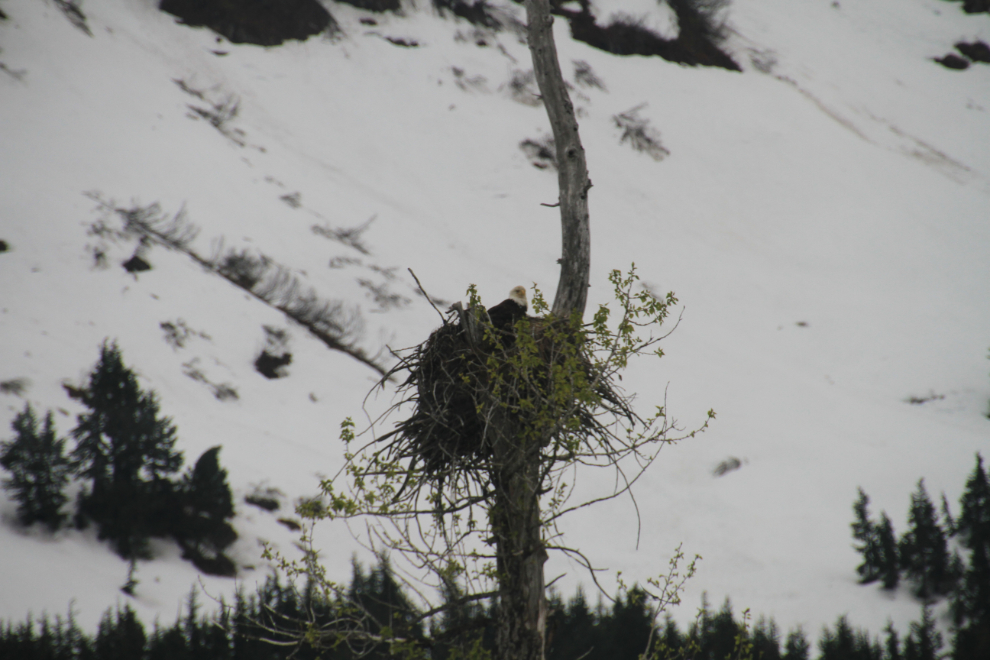
At 9:48 we passed the Skookum Glacier, the last of the glaciers close to the tracks.
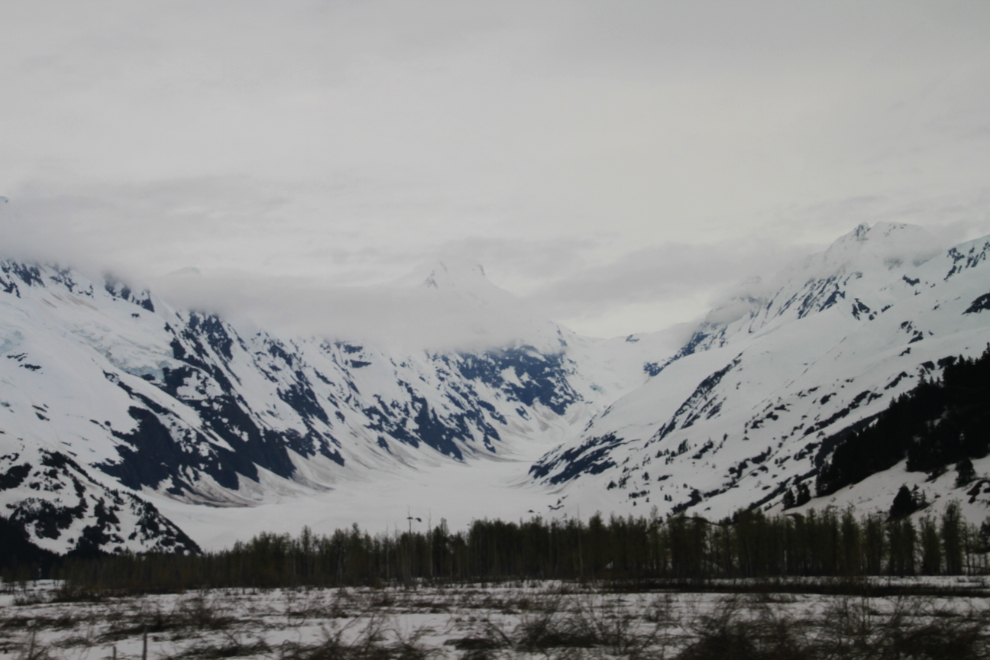
The maintenance station at the crossing of the road to the Portage Glacier and Whittier.

From the Portage crossing right to Anchorage, the railroad parallels the Seward Highway tightly along Turnagain Arm.
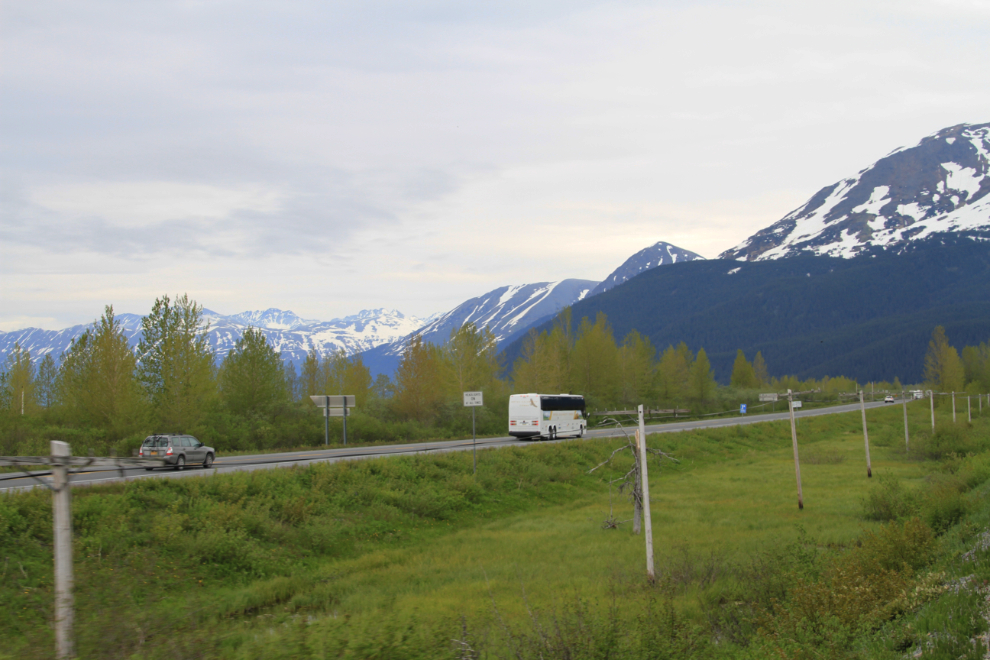
At Portage, we sidetracked again to let a freight train by. This allowed some calm time for watching trains and birds and even flowers.

Portage has been marshy since the 1964 Good Friday earthquake caused the area to sink about 6 feet, destroying the community that had existed here.
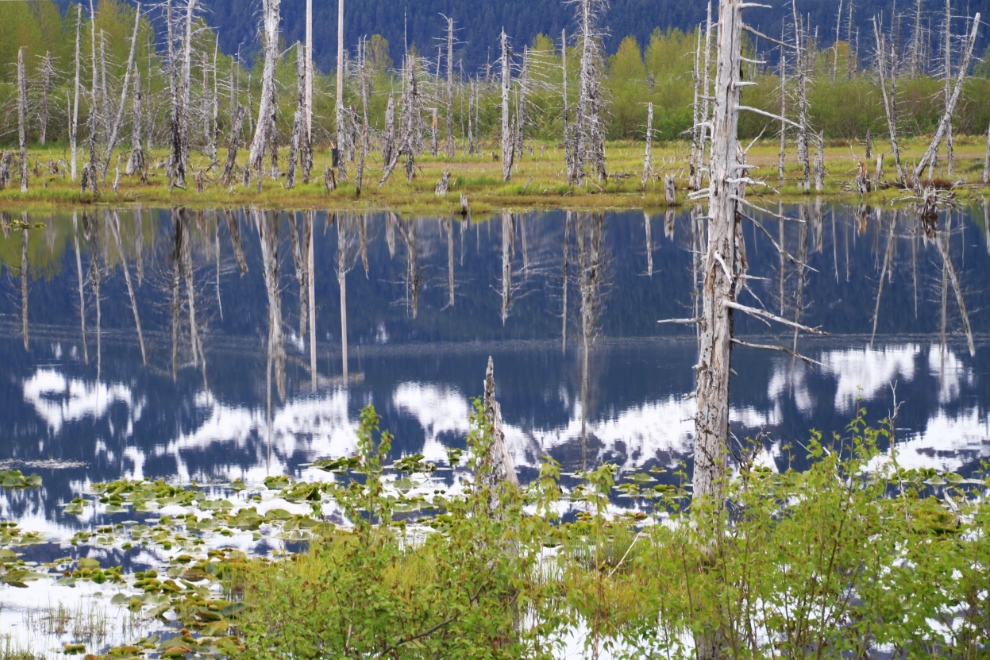
Among the many bird species that nest at Portage are Arctic terns, who attack the trains to defend their nests.
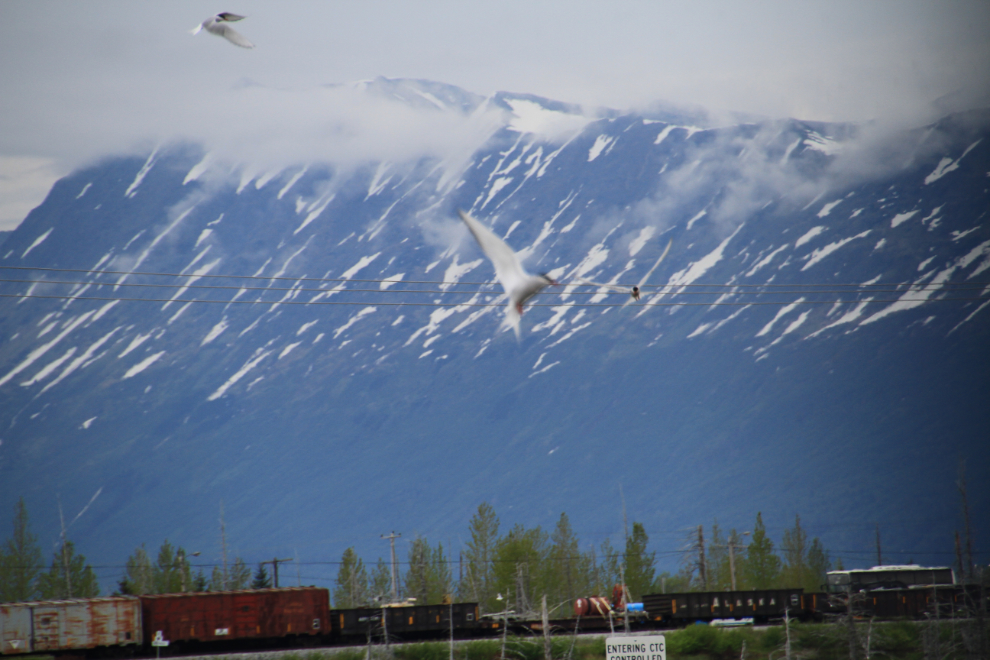
This Arctic tern has nested between two sets of tracks.
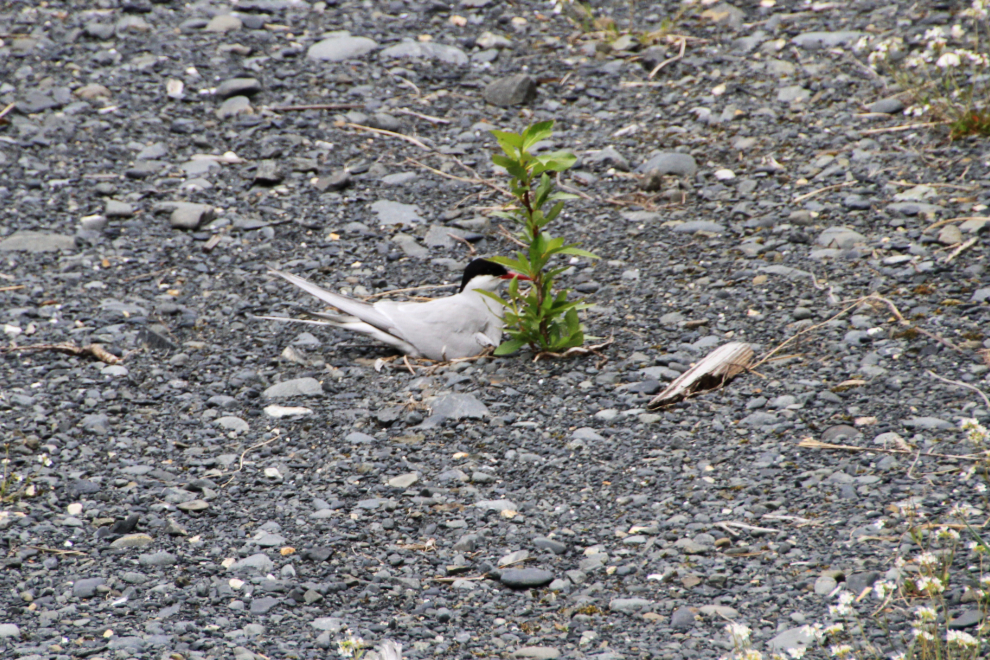
The tern seen above left her nest while we sat there waiting for the freight to pass. Hopefully she wasn’t gone long – you can see her two eggs in this photo.
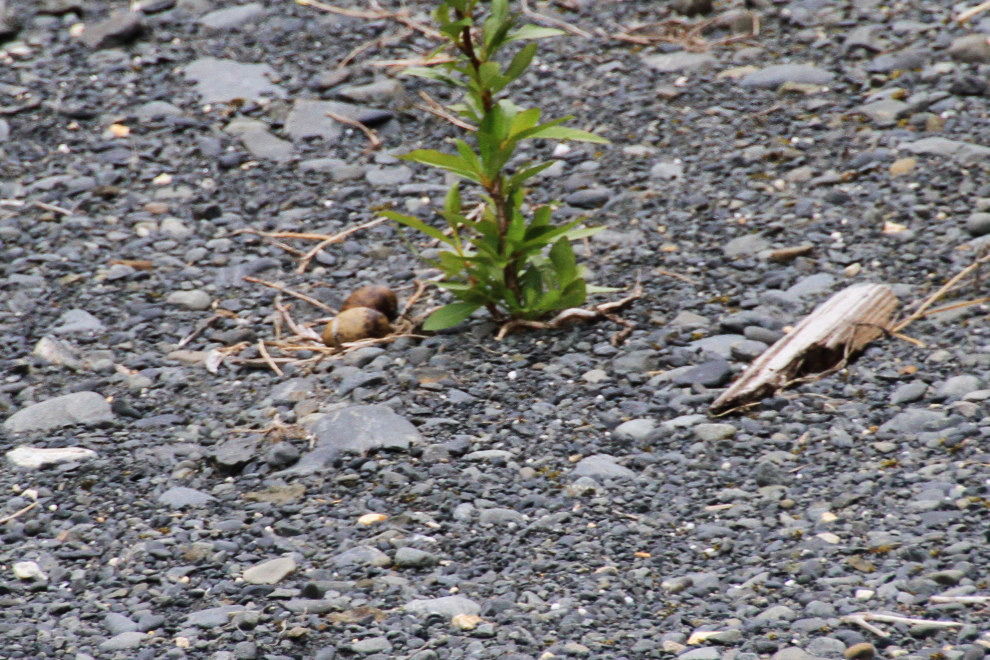
A close look at a tiny Northern Phalarope (Phalaropus lobatus) in the marsh beside us.
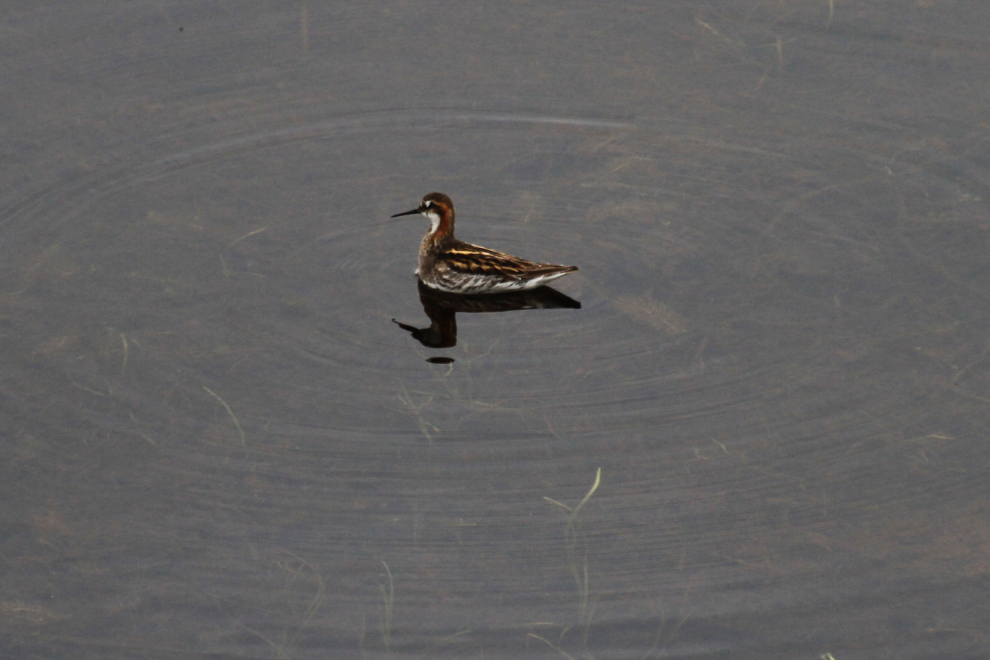
From glaciers beside the tracks to wildflowers in just a few minutes. Alaska in the Spring!
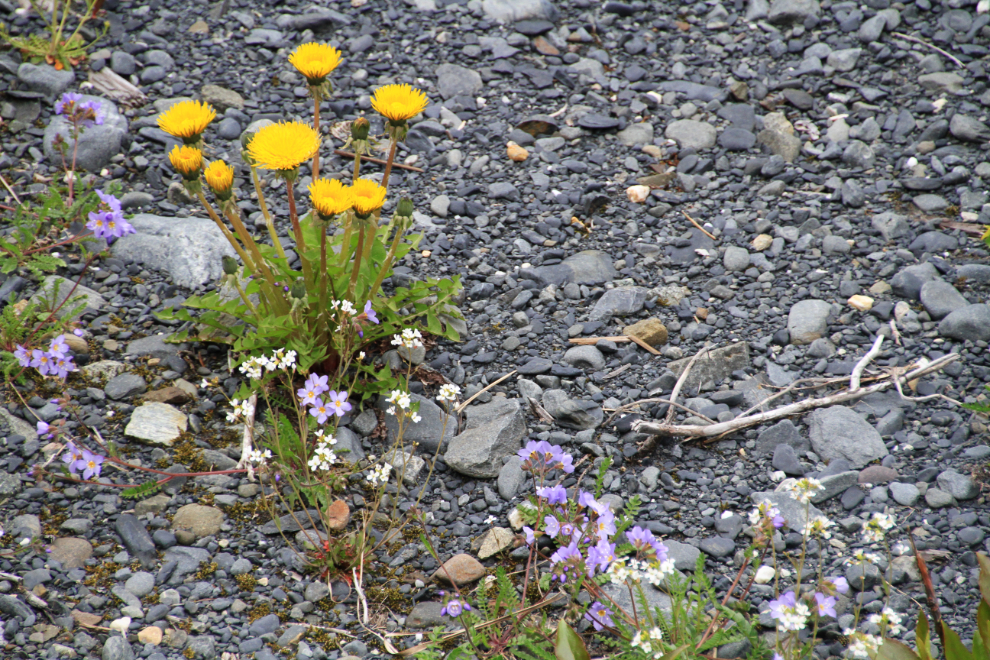
The Portage area is very popular with Mew gulls, one of the smaller gull species.
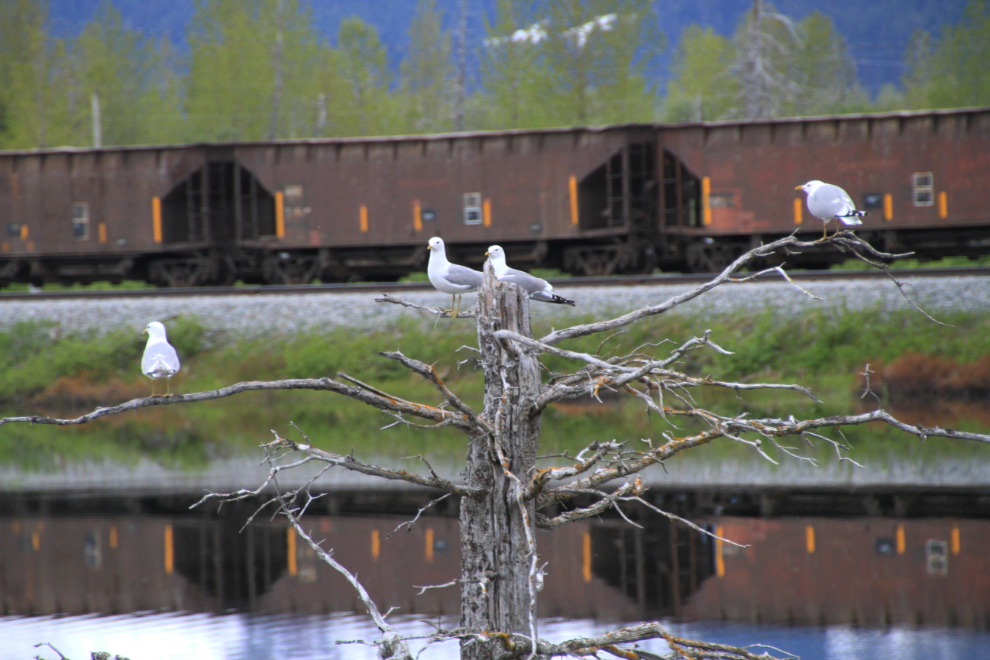
Mew gulls also nest close to the tracks, in trees killed when their roots dropped into salt water during the earthquake.
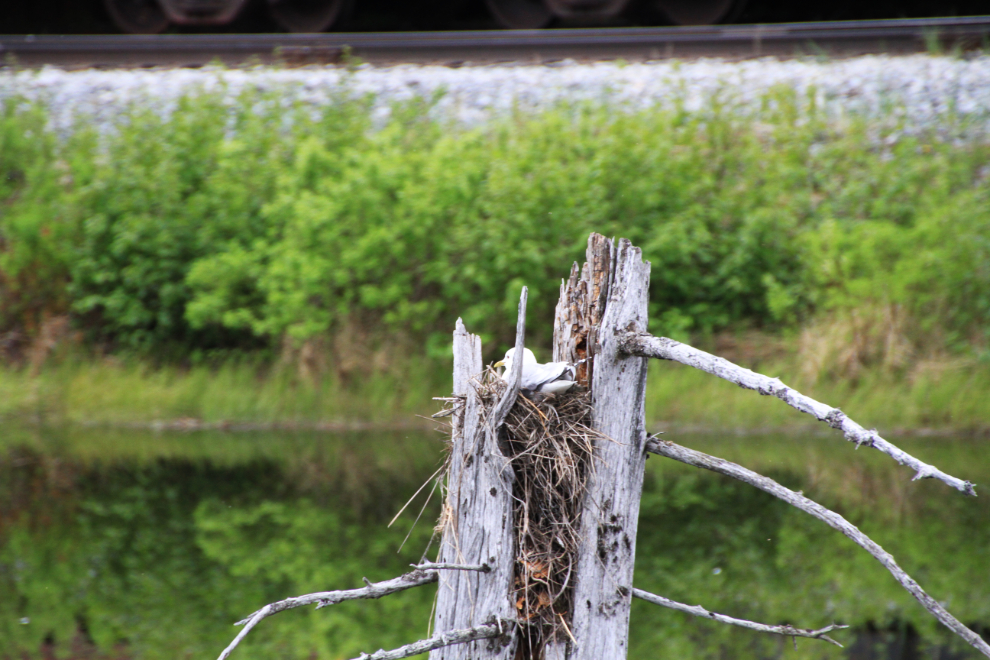
Leaving Portage, at 10:18.
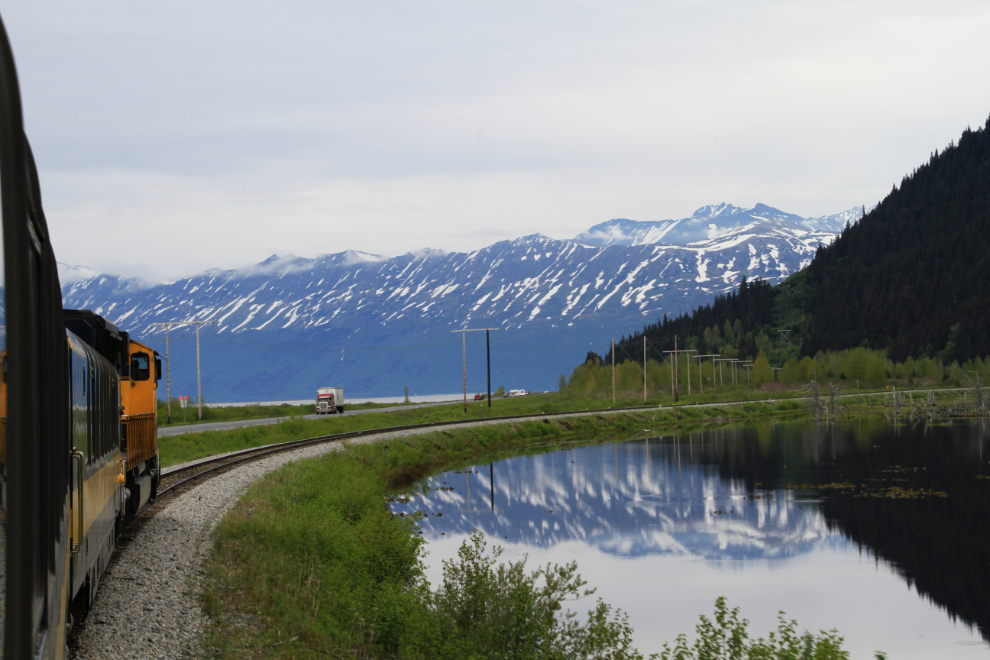
A look at the Alyeska ski area, with the Upper Tram Terminal, home of the famous Seven Glaciers restaurant, in the center.
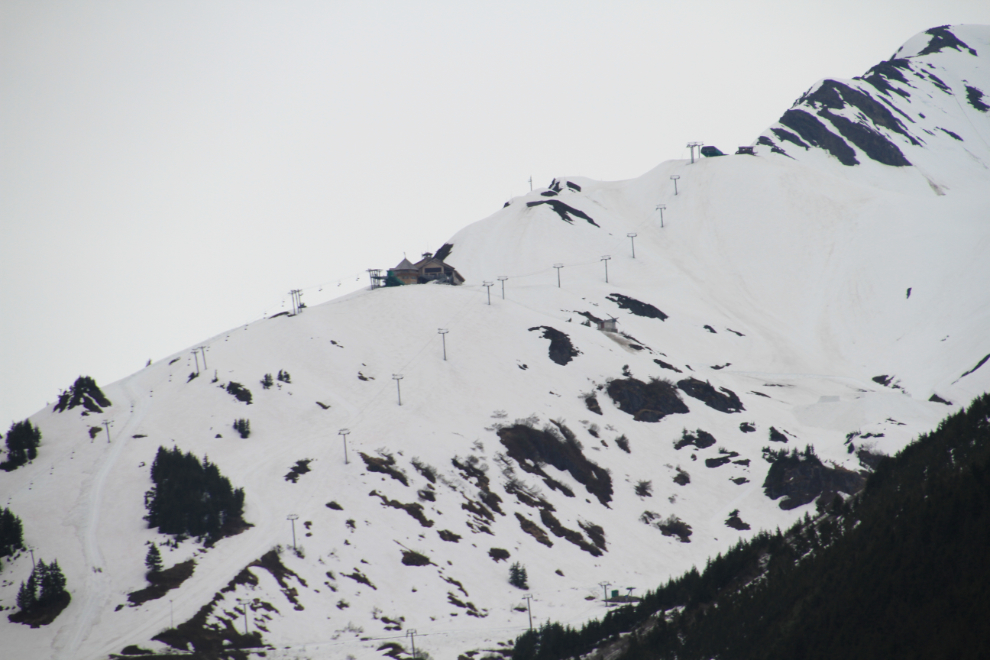
The Seward Highway and Turnagain Arm. In a few hours southbound traffic would be very heavy as Anchorage residents head for the Kenai Peninsula for the weekend.
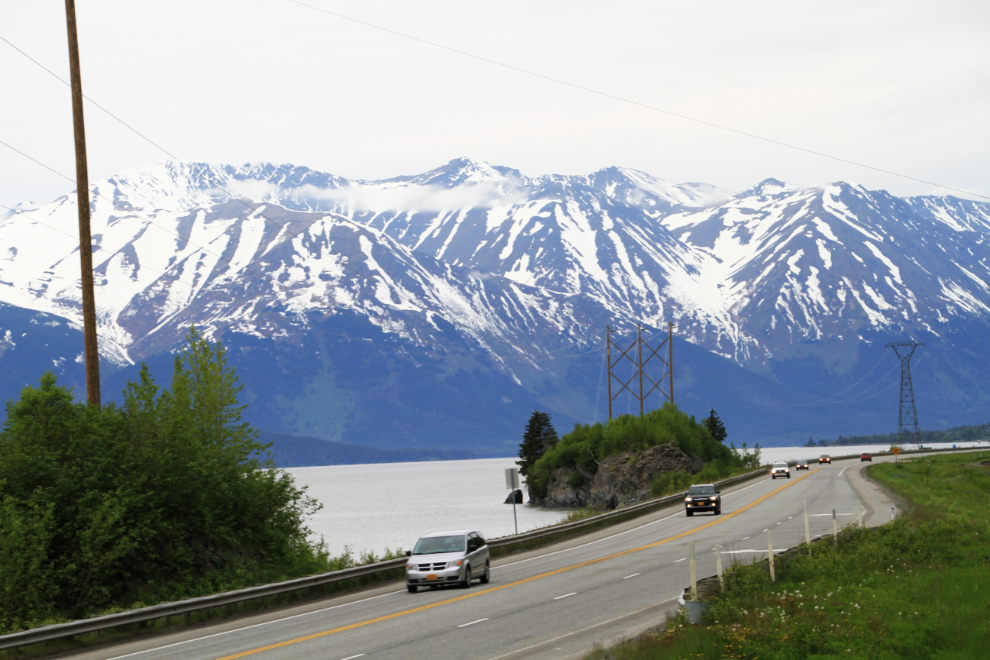
The morning train run ends at the Anchorage Airport (ANC). While we had been told that it was a 3½-hour trip, we didn’t get to ANC until noon, making it just over 5 hours. From there it was a $14 cab ride to pick up our 12-passenger van from E-Z Rent-a-Car – at a base price of $439 for 3 days, it was far less than half of the next lowest price, at Budget. The price was so much lower than any other company, I actually kept a backup reservation in case the van was a junker or there was some other “catch”, but it was a near-new van with no catches.
Our first stop was at the hotel we had reserved, the Springhill Suites Anchorage University Lake. It is a lovely property if you have a car. It took a GPS to find it, but it’s well worth the drive. We were able to check in a bit early, unload our luggage and go for a tour of Anchorage (conducted by me).
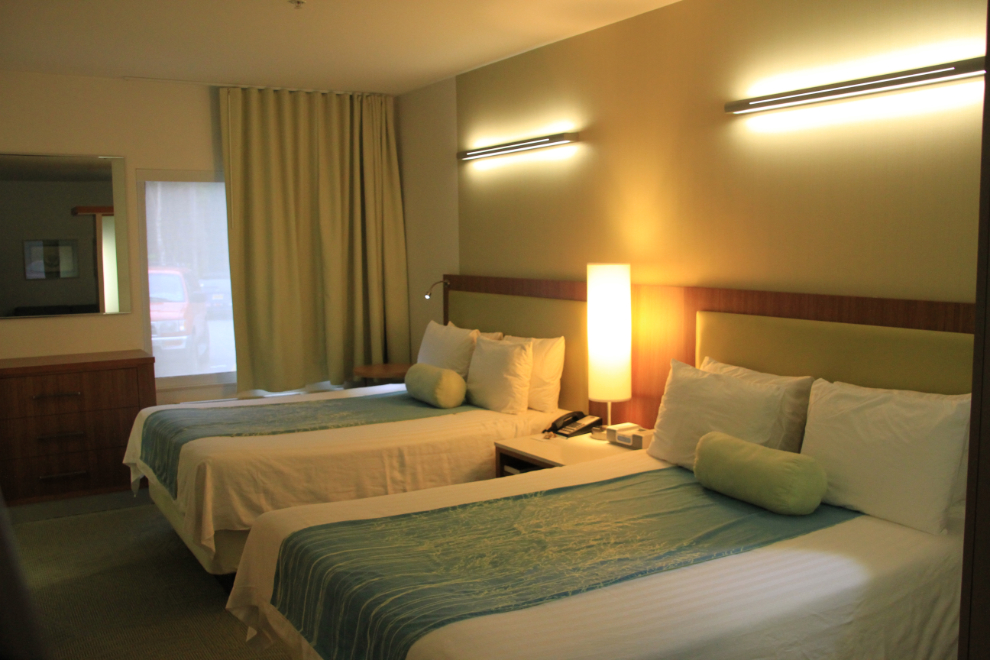
I find the downtown boat launch to be a great place to start the tour – a minus tide makes it even more impressive, as the 30-foot-plus tide range is obvious

Holland America’s Amsterdam docked. We heard on the radio that this is her last year on the 14-night run that brings her right into Anchorage – she’ll be returning to 7-night itineraries next year.

Anchorage is a great city for airplane enthusiasts – this C-17 Globemaster was doing touch-and-gos at Eielson AFB.
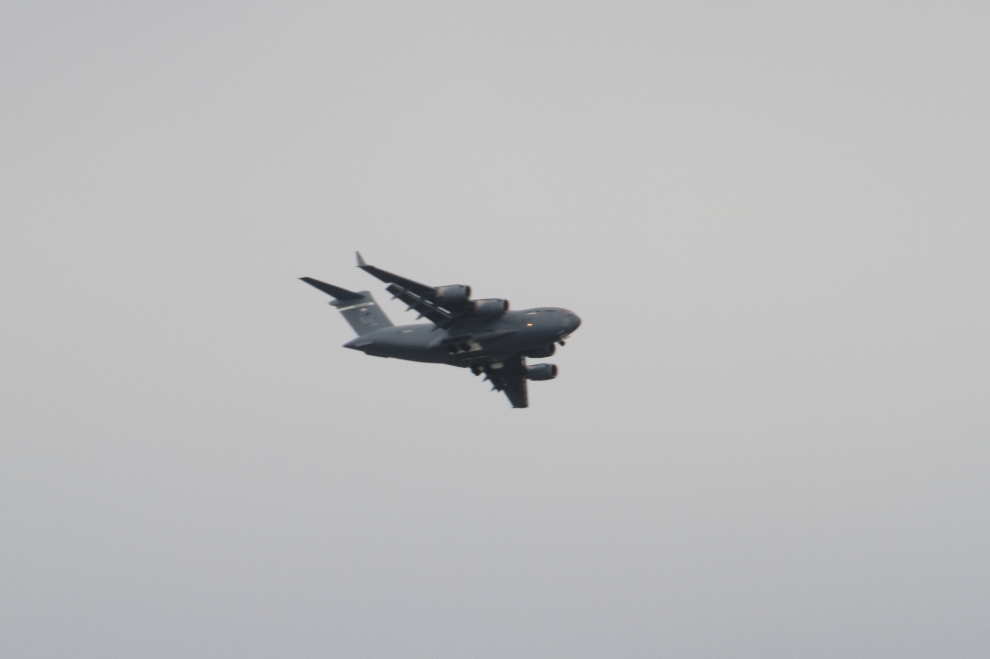
Ship Creek can be a really funny place at low tide, watching people slipping and sliding through the muck. The guy on the right is wearing runners and white socks – never-again-white socks is my guess! We were all laughing our heads off watching them.
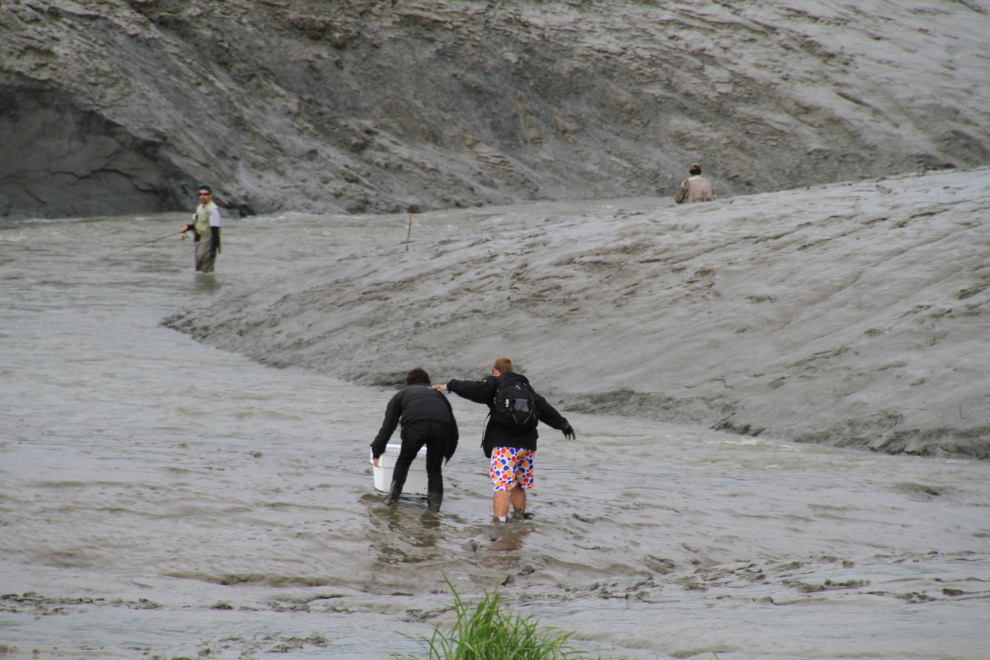
Back to ANC just after 4:00 pm, I was very surprised to find this Antonov An-124-100 Ruslan on the ramp. It’s operated by Volga-Dnepr Airlines, a Russian airfreight company that specializes in unique, oversize and heavy cargo.
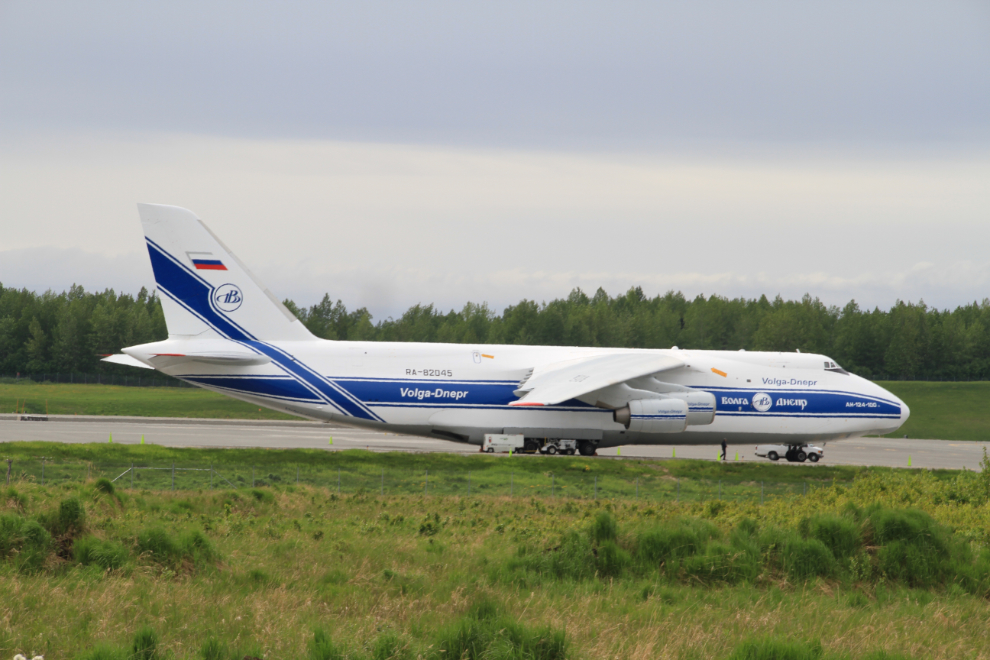
Our last stop on the tour was Lake Hood, the world’s largest float plane base. That’s the Millennium Hotel on the far shore – I used to stay there quite often but it was getting quite run down the last time I stayed there and reviews haven’t risen to their former high levels so I haven’t been back.
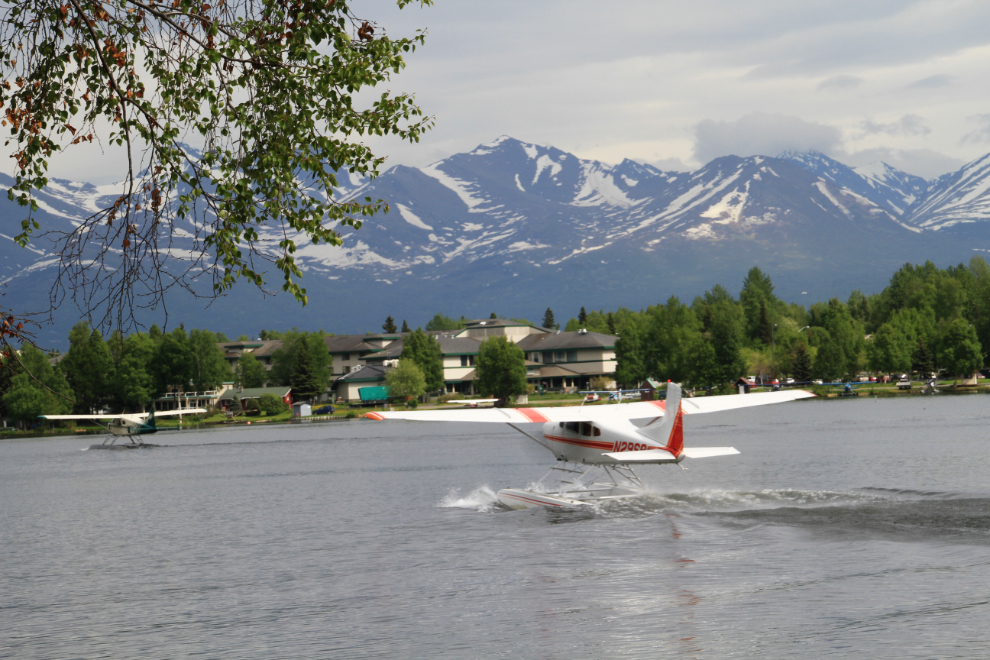
We watched this Cessna A185F take off, then drove downtown for an early dinner at the Glacier Brewhouse. The place was packed as always, and dinner was excellent as always.
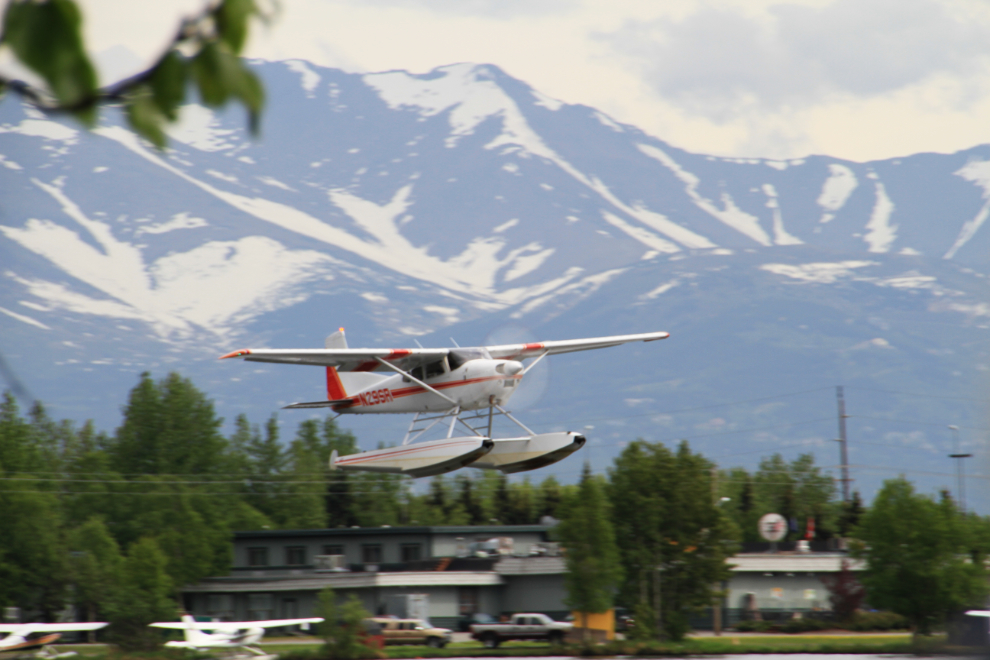
It was early-to-bed for all of us. It had been a very early morning and a busy day, and tomorrow we’d be driving to Denali National Park and a few miles beyond to the B&B we had booked at Healy.